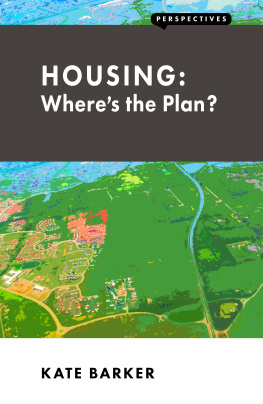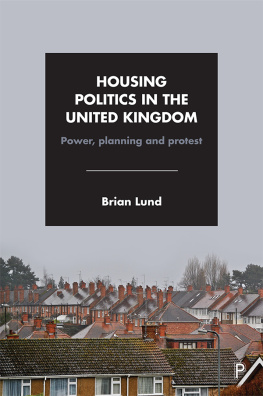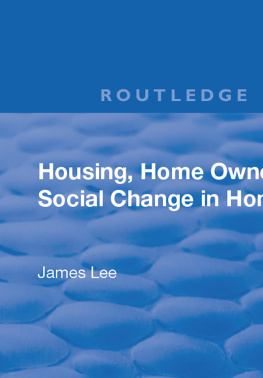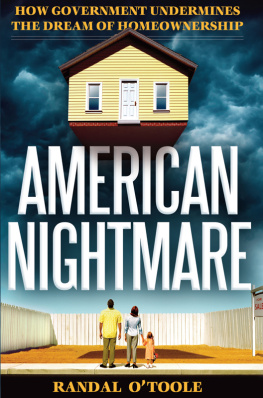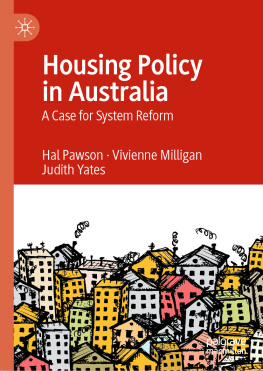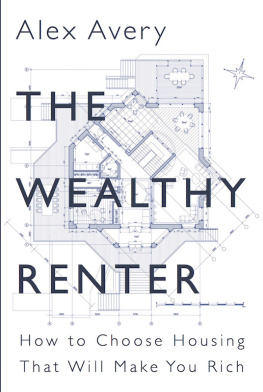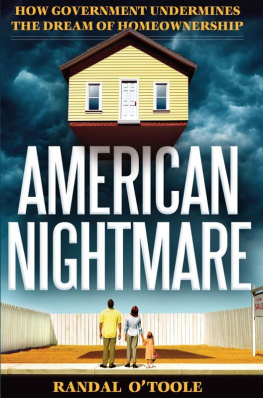First published in 1988 by Hutchinson Education
This edition first published in 2021
by Routledge
2 Park Square, Milton Park, Abingdon, Oxon OX14 4RN
and by Routledge
52 Vanderbilt Avenue, New York, NY 10017
Routledge is an imprint of the Taylor & Francis Group, an informa business
1988 Chris Hamnett and Bill Randolph
All rights reserved. No part of this book may be reprinted or reproduced or utilised in any form or by any electronic, mechanical, or other means, now known or hereafter invented, including photocopying and recording, or in any information storage or retrieval system, without permission in writing from the publishers.
Trademark notice: Product or corporate names may be trademarks or registered trademarks, and are used only for identification and explanation without intent to infringe.
British Library Cataloguing in Publication Data
A catalogue record for this book is available from the British Library
ISBN: 978-0-367-64519-9 (Set)
ISBN: 978-1-00-313856-3 (Set) (ebk)
ISBN: 978-0-367-68211-8 (Volume 7) (hbk)
ISBN: 978-1-00-313473-2 (Volume 7) (ebk)
Publishers Note
The publisher has gone to great lengths to ensure the quality of this reprint but points out that some imperfections in the original copies may be apparent.
Disclaimer
The publisher has made every effort to trace copyright holders and would welcome correspondence from those they have been unable to trace.
Hutchinson Education
An imprint of Century Hutchinson Ltd
62 65 Chandos Place, London WC2N 4NW
Century Hutchinson Australia Pty Ltd
PO Box 496, 16 22 Church Street, Hawthorn,
Victoria 3122, Australia
Century Hutchinson New Zealand Ltd
PO Box 40-086, Glenfield, Auckland 10, New Zealand
Century Hutchinson South Africa (Pty) Ltd
PO Box 337, Bergvlei, 2012 South Africa
First published 1988
Chris Hamnett and Bill Randolph 1988
Typeset in 10/12pt Times by Saxon Printing Ltd., Derby
Printed and bound in Great Britain by
Anchor Brendon Ltd, Tiptree, Essex
British Library Cataloguing in Publication Data
Hamnett, Chris
Cities, housing and profits : Flat break-up and the decline of private renting.
(The Built environment series).
1. HousingEnglandLondon
I. Title II. Randolph, B III. Series
363.509421 HD7334.L6
ISBN 0-09-173235-2
Contents
Preface
2 Londons many mansions: the tenurial transformation of Londons purpose-built flat sector
Introduction
Origins and development
The 1930s flat boom
The modern flat: a machine for living in
Alien elements: the opposition to suburban blocks of flats
Londons many mansions
The size distribution of blocks
Flat break-up in London: the scale of the transformation
Intercensal change, 1966-81
The decline of the privately rented sector in central London
The ownership structure of central Londons purpose-built flat sector
3 The rise and fall of investor landlordism in Britain
Introduction
Housing tenure and the commodification of housing provision
Investor landlordism in the nineteenth century
The origins of the landlords long decline
The First World War: the end of the private housing investor
The role of direct political intervention in the postwar housing market
The postwar housing market: economics and expediency
The 1930s housing boom: an unequal contest
4 From renting to owning: the tenure transfer process
Introduction
Recapitalization and the development of the dual value system in residential property
Rents, values and the value gap
Pity the poor landlord: home ownership and the profitability of housing as a commercial investment
Pity the poor tenant: home ownership and the consumption of housing
House values and the cumulative disadvantages of landlordism
The emergence of the residential property trader
Creating the market: the role of mortgage finance
Creating the market: the case of the Bradford Property Trust
5 The preconditions for flat break-ups, 1945-65
Introduction
Flats for sale: the development of a new form of housing tenure
Priming the pump: the provision of mortgage finance
A new lease of life
Inflation, taxation and politics: the recipe for disinvestment
The impact of rent control and Corporation Tax
6 The development of the flat break-up market, 1965-80
Introduction - Corporate restructuring and disinvestment
The response: -creating the market
Take-off into the 1970s
From boom to bust, and back
Prices and rents in 1980
7 The biggest break-up of them all: the rise and fall of London County Freeholds Key Flats empire
Introduction
London County Freehold: 1888 to 1970
From pampered to protest: the arrival of the flat dealers
William Stern: last of the residential magnates
The vultures descend
First National Finance Corporation: bringing the game into disrepute
Regalian Securities: from boom to bust in 2 years
Berger: the secret empire
Postscript
8 Varieties of landlord response: investor and trading landlords
Introduction
The shift in ownership rationale
Investment to trading: an empirical analysis
The Peachey Property Corporation
Regional Properties
Central and District Properties Ltd
Property Holding and Investment Trust
Freshwater: swimming against the tide
Peureula Investments
The rise and fall of Westgrove Securities
Conclusions: disinvestment, break-up and the corporate experience
9 The social costs and consequences of break up
Introduction
Social change in residential areas
Flat break-ups and the social restructuring of central London
The consequence of flat break-up for residents
Break-ups and the advent of the anonymous landlords
Attempts to purchase
The race to maximize cash flow
Rapidly rising rents
Falling standards and rising costs
Leasehold ownership: the time-bomb ticking away in the flat world
Conclusions
10 The international parallels: a comparative analysis of Britain, the United States and Holland
Introduction
Condominium and leasehold ownership
The development of condominium conversions in the United States



